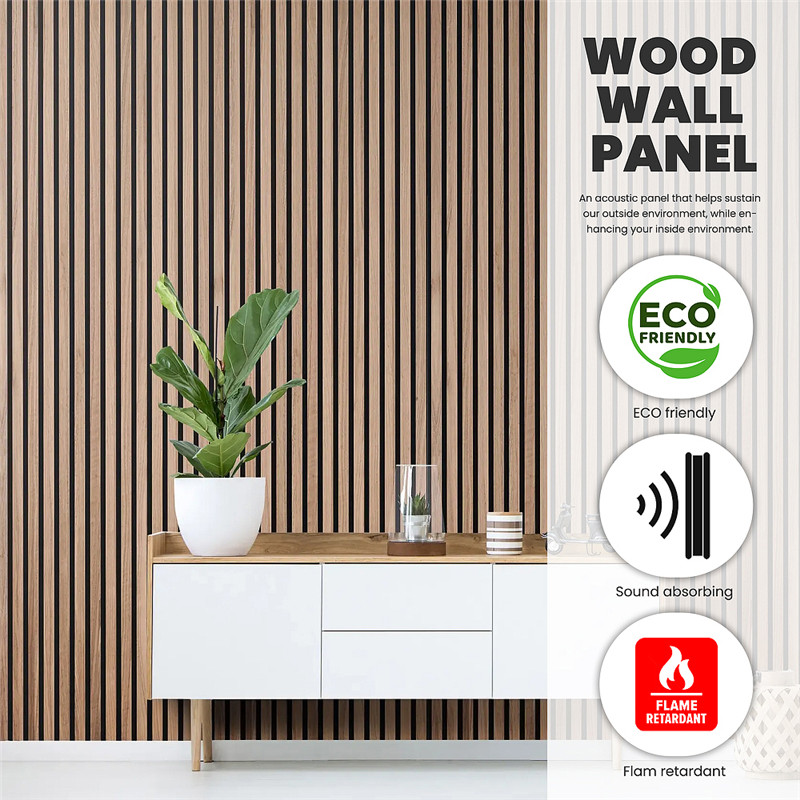How to Choose the Perfect Wood Acoustic Wall Panels for Your Home Studio
Setting up a home studio can be a rewarding endeavor, but achieving the right acoustics is crucial for producing high-quality sound. Wood acoustic wall panels are an excellent choice for enhancing sound quality while adding a touch of elegance to your space. Here’s a comprehensive guide to help you choose the perfect wood acoustic wall panels for your home studio.
Understanding Acoustic Needs
Before diving into the specifics of wood acoustic wall panels, it’s essential to understand your acoustic needs. Consider the following factors:
Room Size: Larger rooms may require more extensive sound treatment to manage reverberation and echoes.
Sound Sources: The type of equipment you use (e.g., speakers, instruments) will influence the kind of panels you need.
Desired Sound Quality: Determine whether you need panels for recording, mixing, or both.

Types of Acoustic Wall Panels
There are several types of wood acoustic wall panels, each with its own unique features and benefits. Here are two popular options:
Wood Slat Acoustic Panel
Description: Wood slat acoustic panels consist of thin wooden slats arranged parallel to each other, creating gaps that allow sound to pass through and be absorbed by the backing material.
Benefits:
Aesthetic Appeal: The natural wood finish adds a warm and sophisticated look to any room.
Versatility: Available in various finishes and colors to match your interior design.
Effective Sound Absorption: The gaps between the slats help reduce mid and high-frequency reflections.
Use Case: Ideal for home studios where aesthetics and sound quality are equally important.
3D Acoustic Wall Felt Panel
Description: 3D acoustic wall felt panels feature a textured, three-dimensional surface made from felt or similar materials, often with a wood frame.
Benefits:
Enhanced Sound Absorption: The 3D texture increases the surface area, providing better absorption of low, mid, and high frequencies.
Modern Design: The contemporary look fits well in modern and minimalist interiors.
Easy Installation: Lightweight and easy to mount on walls.
Use Case: Suitable for home studios that require robust sound management and a modern aesthetic.
Key Features to Look For
When choosing wood acoustic wall panels, consider the following key features:
Material Quality: Ensure the wood is of high quality and durable. Solid wood panels are generally more durable than engineered wood.
Absorption Coefficient: Check the NRC (Noise Reduction Coefficient) rating, which indicates how well the panel absorbs sound. Higher NRC values mean better sound absorption.
Size and Shape: Panels come in various sizes and shapes. Choose panels that fit well in your space and cover the necessary areas.
Mounting Options: Some panels come with pre-drilled holes or mounting brackets. Ensure the mounting system is secure and easy to install.
Installation Tips
Proper installation is crucial for maximizing the effectiveness of your wood acoustic panels. Follow these tips:
Measure Your Space: Accurately measure the walls where you plan to install the panels to determine the number and size needed.
Plan the Layout: Sketch a layout of your room and mark the positions for the panels. Consider placing them on parallel walls to balance sound absorption.
Use Adhesives or Mounting Brackets: Depending on the type of panel, use appropriate adhesives or mounting brackets to secure them to the wall.
Test and Adjust: After installation, test the acoustics in your studio. Make adjustments if necessary by adding or moving panels to achieve the desired sound quality.
Maintenance and Care
To ensure your wood acoustic wall panels remain in top condition, follow these maintenance tips:
Dust Regularly: Use a soft cloth or duster to remove dust and debris from the panels.
Avoid Moisture: Keep the panels away from sources of moisture to prevent warping or damage.
Check for Damage: Inspect the panels periodically for any signs of wear or damage and replace them if necessary.
Conclusion
Choosing the perfect wood acoustic wall panels for your home studio involves understanding your acoustic needs, considering the types of panels available, and focusing on key features and proper installation. Whether you opt for the elegant “Wood Slat Acoustic Panel” or the modern “3D Acoustic Wall Felt Panel,” the right choice will enhance both the sound quality and the aesthetic appeal of your home studio. With careful planning and attention to detail, you can create a professional and inviting space for all your audio projects.
- Previous: None
- Next: Top 5 Design Ideas Using Carrara Quartz Stone for a Luxurious Look

